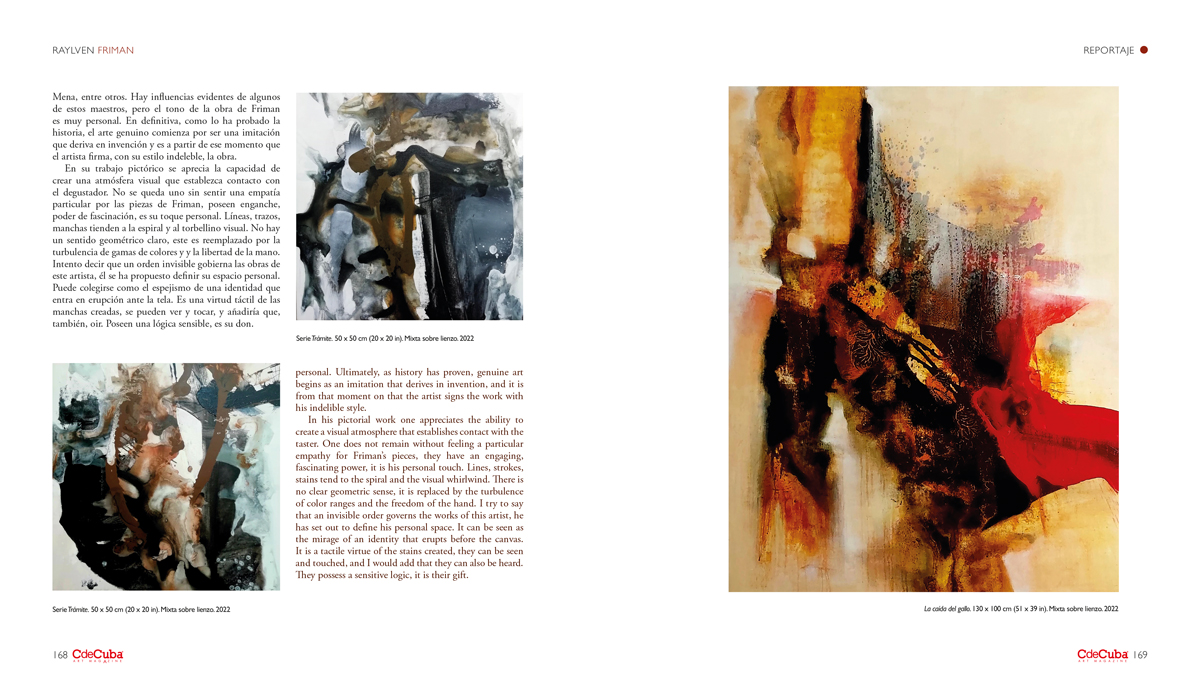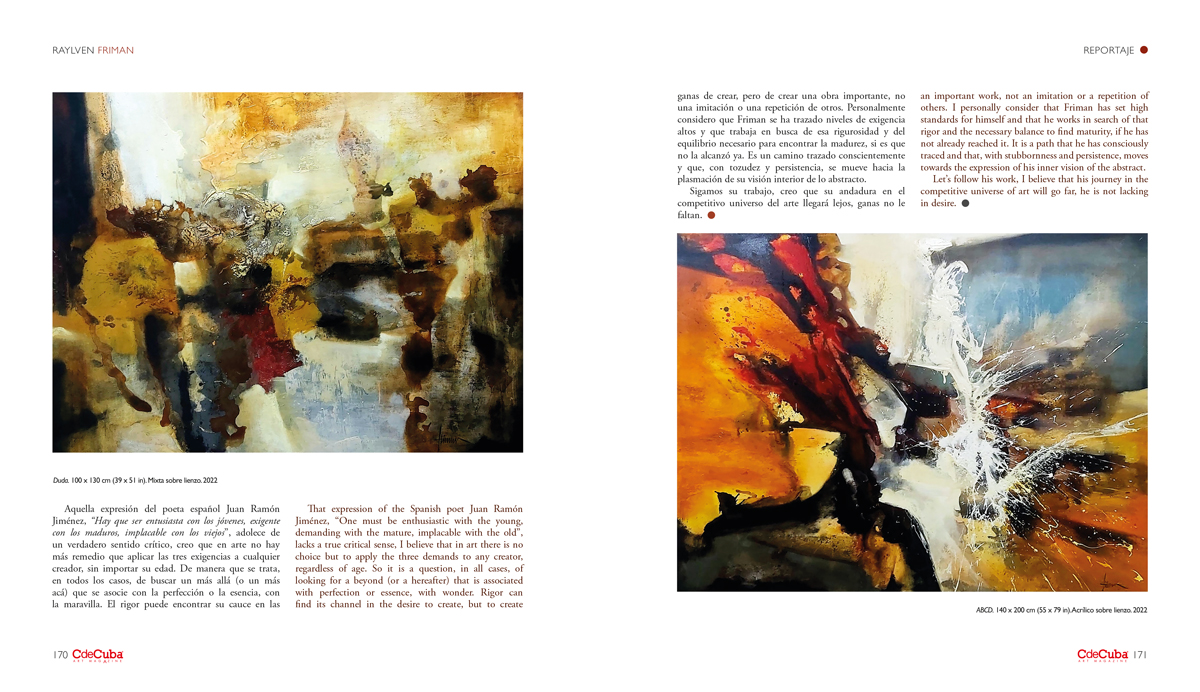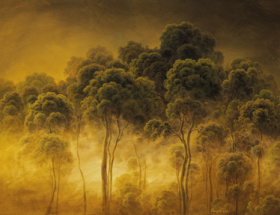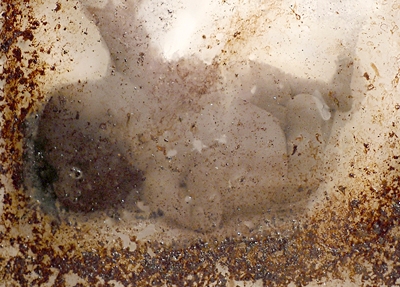A Journey Full of Glimpses
By Rafael Acosta de Arriba
The French poet and painter Henri Michaux, who reflected and wrote a lot on the subject of stains, said that “whatever the strokes, the words, the colors arranged on a canvas, the figure obtained is always full of meaning”, undoubtedly a controversial expression, since art lies precisely in the fact that those stains obtained from strokes and colors, in order to make sense, irremissibly need the artist’s talent.
Raylven Friman’s work is a bet for the critical questioning of Michaux’s idea mentioned above. He is a young creator who has already given enough proof of his mastery on canvas. His work within abstraction has the power of syntax of stains as its first value.
Friman’s painting makes me evoke two concepts concomitant to abstraction: music and mathematics. In his canvases lurk, hidden and dissolved in the forms and strokes, the mysteries of mathematical analysis and some melodies already installed in his mind. It is a virtue of abstraction that not all abstract painters manage to capture in their works.
Gesturing stains cannot be done by just anyone, especially if those stains are intended to reach the status of art. Friman is a born abstract. His academic graduation thesis was based on this modality of pictorial art, that is to say, he has studied and practices abstraction because he masters it and knows it in depth. His stroke is chaotic within a mental order, it responds to a premeditated strategy, at least in its essence; then the brush moves freely across the surface of the canvas like following a known melodic rhythm. It is its own music. The range of colors is also predetermined by this cerebral sketch of the painting. The rest is provided by the talent and the creative impulse, the state of grace necessary to create the turmoil of colors. To translate spaces is first and foremost to interpret them, and Friman is an interpreter of the intimate experience of the real. His images are irreducible to concepts, they are gestures that are signs, a sort of flight forward, of breaking out of molds, of escaping from oneself while expressing oneself on the canvas. Pure energy of the strokes. Total freedom.
Friman knows he is part of a rich and powerful artistic tradition in which names such as Hugo Consuegra, Guido Llinás, Antonio Vidal, Pedro de Oraá, José Vincench, Julia Valdés, Andy Rivero and Rigoberto Mena, among others, stand out. There are obvious influences from some of these masters, but the tone of Friman’s work is very personal. Ultimately, as history has proven, genuine art begins as an imitation that derives in invention, and it is from that moment on that the artist signs the work with his indelible style.
In his pictorial work one appreciates the ability to create a visual atmosphere that establishes contact with the taster. One does not remain without feeling a particular empathy for Friman’s pieces, they have an engaging, fascinating power, it is his personal touch. Lines, strokes, stains tend to the spiral and the visual whirlwind. There is no clear geometric sense, it is replaced by the turbulence of color ranges and the freedom of the hand. I try to say that an invisible order governs the works of this artist, he has set out to define his personal space. It can be seen as the mirage of an identity that erupts before the canvas. It is a tactile virtue of the stains created, they can be seen and touched, and I would add that they can also be heard. They possess a sensitive logic, it is their gift.
That expression of the Spanish poet Juan Ramón Jiménez, “One must be enthusiastic with the young, demanding with the mature, implacable with the old”, lacks a true critical sense, I believe that in art there is no choice but to apply the three demands to any creator, regardless of age. So it is a question, in all cases, of looking for a beyond (or a hereafter) that is associated with perfection or essence, with wonder. Rigor can find its channel in the desire to create, but to create an important work, not an imitation or a repetition of others. I personally consider that Friman has set high standards for himself and that he works in search of that rigor and the necessary balance to find maturity, if he has not already reached it. It is a path that he has consciously traced and that, with stubbornness and persistence, moves towards the expression of his inner vision of the abstract.
Let’s follow his work, I believe that his journey in the competitive universe of art will go far, he is not lacking in desire.






